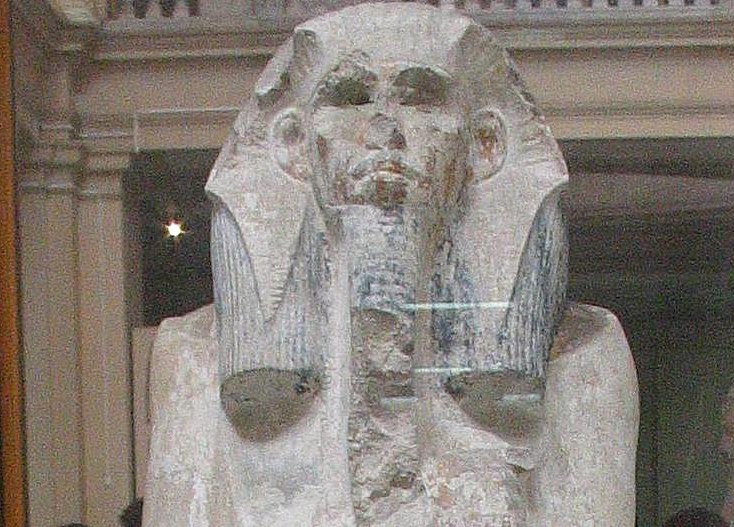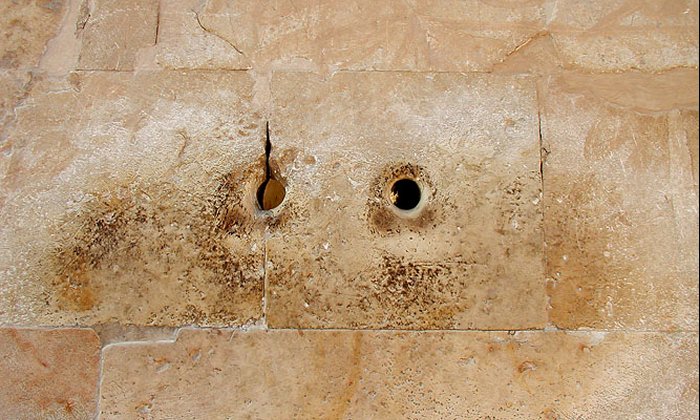Djoser – Most Outstanding King Of The Third Dynasty In Ancient Egypt And His Step Pyramid
Angela Sutherland - AncientPages.com - Djoser was possibly the founder of the Third Dynasty of the Old Kingdom in Egypt. The Old Kingdom began with the third dynasty (2686 BC) and ended with the sixth, about 2333 BC).
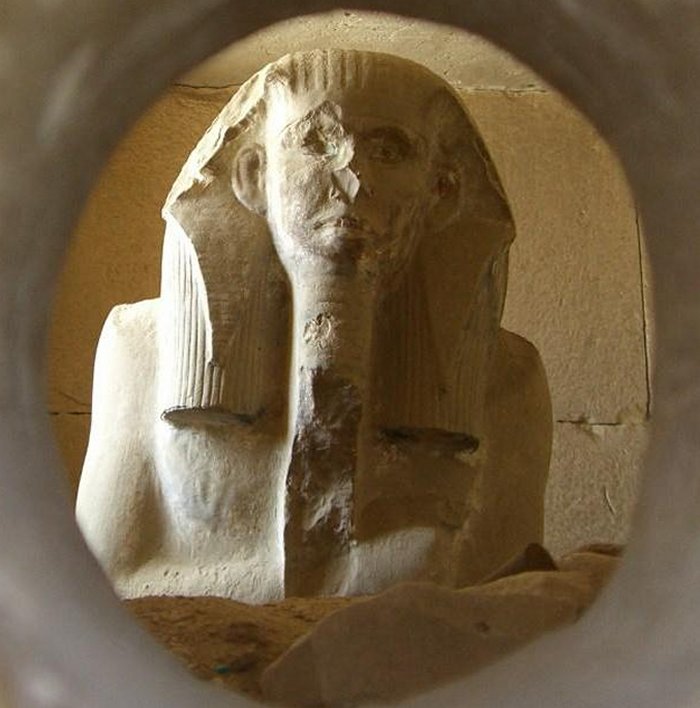 Pharaoh Djoser's Ka Chamber. Image credit: Vincent Brown – source
Pharaoh Djoser's Ka Chamber. Image credit: Vincent Brown – source
Djoser (also known as Zoser) was responsible for the world's first known monumental stone building, the Step Pyramid at Saqqara, built during the Third Dynasty (c. 2686 BC–c. 2613 BC) and became his tomb. Later other pyramids were built.
Little is known about Djoser ( also known as Netjerikhet), who succeeded to the throne when the country of Egypt experienced many political problems and instability. His ambitious goal was to overcome them.
It is believed that Djoser managed to extend and strengthen his rule and reach as far as Aswan, the First Cataract (later the official southern boundary of Egypt). During his reign, Egypt was politically stable, with a flourishing economy.
At the same time, however, it is also known that for seven years in a row, the Nile River had failed to rise high enough to irrigate the fields, and in consequence, his people experienced the devastation of crops and starvation. Djoser had to act quickly, so he consulted his chief advisor Imhotep about the source of the inundation, who, in turn, discovered that Hapi (Hapy), the early Egyptian god of the Nile and the spirit of the inundation, lived in twin caverns located under the island of Elephantine. When it was time for the Nile to rise, the ram god Khnum controlled the floodwaters, who alone could unbolt the door of the caverns. When Djoser heard this, he made lavish offerings to Khnum.
That night in a dream, Khnum promised Djoser that he would release Hapi, so it happened. The seven-year-long drought and associated famine subsequently ended with a plentiful harvest.
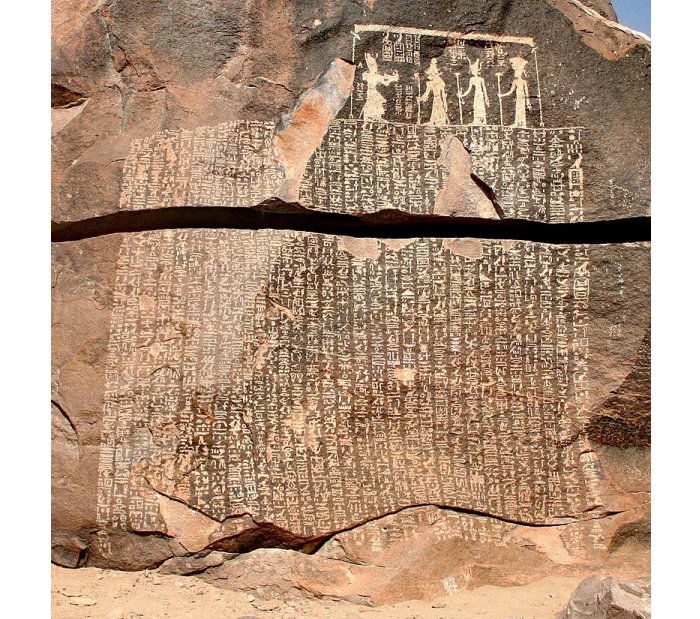 The Famine Stela, mentioning Djoser. Image credit: Morburre - CC BY-SA 3.0
The Famine Stela, mentioning Djoser. Image credit: Morburre - CC BY-SA 3.0
The Pharaoh Djoser is associated with a massive and innovative structure known as the Step Pyramid. Imhotep primarily supported his building project, the Pharaoh's genius designer, and his vizier, who decided to build a gigantic stone mastaba. During the construction, they made another mastaba on top of the first and another on top of the second. They continued this process until they had enlarged the structure into the world's first pyramid. It was called a "step pyramid," made of limestone.
It consisted of six terraces some 200 feet (60 m) high, a base measuring approximately 125 x 109 meters, and only one close-fitting corridor leading to the close center of the monument and ending in a rough chamber where the entrance to the tomb shaft was once hidden.
Djoser (Zoser), whose name means as much as the 'saint,' was the son of queen Nimaathap and king Khasekhemwy (ca. 2690 BC), the last Pharaoh of the Second Dynasty of Egypt. However, very little is known about this great personality of ancient Egypt.
He took the throne after the death of his elder brother. In the first period of the reign, the mother ruled as regent because of her son's young age. He probably led initially from Abydos but then from Memphis.
 King Djoser's name and titles appear between the 'djed pillar and 'tyet' amulet, followed by Imhotep's titles beginning 'The Treasurer of the King of Lower Egypt,' on this broken-off statue base. (Artifact is stored in Cairo Museum.)
King Djoser's name and titles appear between the 'djed pillar and 'tyet' amulet, followed by Imhotep's titles beginning 'The Treasurer of the King of Lower Egypt,' on this broken-off statue base. (Artifact is stored in Cairo Museum.)
Historically, Djoser became the ruler of Upper and Lower Egypt, the first king of the third dynasty of the old state period, and reigned in 2690-2670 BC (or 2720-2700 BC). Some other sources, however, even propose the date 2686-2667 BC. Until the end of the history of ancient Egypt, he was considered a highly respected and profoundly honored ruler.
Many Treasures Robbed From The Step Pyramid
Unfortunately, the pyramid - the tallest and most massive building of the complex covering 40 acres (16 hectares) that included courtyards, shrines, and the priests' living quarters – was not protected enough from looters.
Still, excavations revealed plenty of stone vases under the pyramid. In one of the passages, archaeologists discovered some of Djoser's remains and a mummified left foot probably belonging to the king. Among other discoveries is an alabaster coffin containing a young, perhaps eight-year-old child, accompanied by other deceased of the royal family. These valuable goods - decorated with still recognizable names of earlier Egyptian kings – still represent beautiful forms and high-quality artistry.
Other findings include two boundary stones in the king's Heb Sed court, located within his pyramid complex. Djoser is also shown performing the Heb Sed in a false doorway inside his pyramid.
Statue of Djoser in Cairo Museum. This statue was originally in the serdab in the step pyramid complex. Egyptian Museum - Copyrighted free use
A box-like structure (in Arabic: serdab) made of Tura limestone, used in the wealthiest tombs, was discovered during the excavations of the pyramid. Within the serdab - with two small holes pierced through its front-facing slope - there was a life-size seated figure of Djoser.
Archaeologists and other experts consider this sculpture the oldest sculpted royal figure from Egypt. The artwork depicts "the king closely wrapped in a long white cloak, probably used in the king's jubilee or heb-sed festival.
Food offerings and incense would have been placed on an altar before the two small eyeholes in the wall of the serdab, enabling the ka (the spirit of the king) to partake of the spirit substance - while, at the end of the day, the mortuary priests could enjoy the material substance of the offerings." 1
Serdab of Djoser's Pyramid. Image credit: Jon Bodsworth – source
Perhaps, the great Pharaoh Djoser is forgotten today. Still, his and Imhotep's creation - considered the House of the Soul - created a deep, long-lasting impression for millennia. The pyramid of Pharaoh Djoser and its surrounding funeral complex is today recognized worldwide as the first building built entirely of stone.
After a reign of approximately nineteen years, Djoser died and was succeeded by Sekhemkhet around 2649 BC. Building such a massive structure as the Step Pyramid took minimal time. Still, he managed to finish this project working with Imhotep, which was well-functioning cooperation.
Written by – A. Sutherland - AncientPages.com Senior Staff Writer
Updated on January 27, 2023
Copyright © AncientPages.com All rights reserved. This material may not be published, broadcast, rewritten or redistributed in whole or part without the express written permission of AncientPages.com
Expand for references- Clayton, Peter A, Chronicle of the Pharaohs
History, Captivating. Ancient Egypt
Bunson, M. The Encyclopedia of Ancient Egypt.
More From Ancient Pages
-
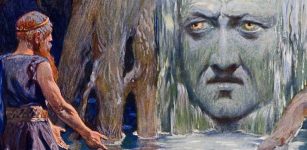 Giant Mimir And The Well Of Wisdom In Norse Beliefs
Featured Stories | Apr 11, 2018
Giant Mimir And The Well Of Wisdom In Norse Beliefs
Featured Stories | Apr 11, 2018 -
 Early, Complex Brain Surgery Performed In Ancient Greece
Archaeology | Apr 8, 2020
Early, Complex Brain Surgery Performed In Ancient Greece
Archaeology | Apr 8, 2020 -
 1,900-year-old ‘water law’ unearthed in Laodicea
Civilizations | Aug 26, 2015
1,900-year-old ‘water law’ unearthed in Laodicea
Civilizations | Aug 26, 2015 -
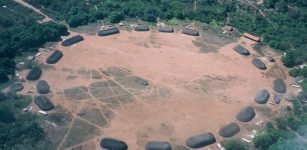 Ancient Amazonians Intentionally Created Fertile “Dark Earth”
Archaeology | Sep 20, 2023
Ancient Amazonians Intentionally Created Fertile “Dark Earth”
Archaeology | Sep 20, 2023 -
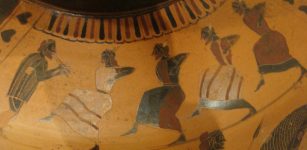 Dance Was A Gift Of The Gods To Ancient Greeks
Featured Stories | Oct 4, 2021
Dance Was A Gift Of The Gods To Ancient Greeks
Featured Stories | Oct 4, 2021 -
 Lost City Of Alexander The Great Found After 2,000 Years In Iraq
Archaeology | Oct 1, 2017
Lost City Of Alexander The Great Found After 2,000 Years In Iraq
Archaeology | Oct 1, 2017 -
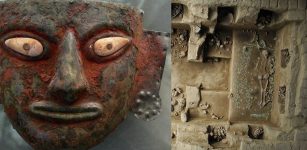 Ancient Tomb Of Peru’s Moche Priestesses Unearthed
Archaeology | Jul 23, 2016
Ancient Tomb Of Peru’s Moche Priestesses Unearthed
Archaeology | Jul 23, 2016 -
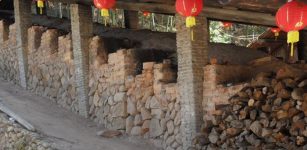 Ceramics Are Telling The Story Of 14th Century Chinese Trade
News | Jun 28, 2023
Ceramics Are Telling The Story Of 14th Century Chinese Trade
News | Jun 28, 2023 -
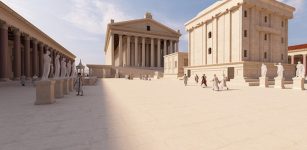 Magnificent Virtual 3D Tour Of Famous Temples Of Baalbek – Now Available To Anyone
News | Apr 7, 2021
Magnificent Virtual 3D Tour Of Famous Temples Of Baalbek – Now Available To Anyone
News | Apr 7, 2021 -
 Secrets Of Legendary Viking Crystal Sunstones And The Mysterious Uunartoq Artifact Unraveled
Artifacts | Jun 3, 2015
Secrets Of Legendary Viking Crystal Sunstones And The Mysterious Uunartoq Artifact Unraveled
Artifacts | Jun 3, 2015 -
 Tiny Paper Scraps From ‘Queen Anne’s Revenge’ Shed Light On Reading Habits Of Blackbeard’s Pirates
Archaeology | Jan 7, 2018
Tiny Paper Scraps From ‘Queen Anne’s Revenge’ Shed Light On Reading Habits Of Blackbeard’s Pirates
Archaeology | Jan 7, 2018 -
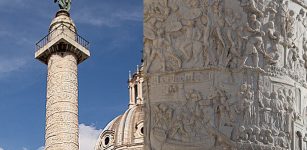 Trajan’s Column – A Roman Triumphal Column In Ancient Rome
Ancient History Facts | Aug 31, 2021
Trajan’s Column – A Roman Triumphal Column In Ancient Rome
Ancient History Facts | Aug 31, 2021 -
 Great Migrations Took Place In Poland And Ukraine In Bronze Age
Archaeology | Sep 8, 2023
Great Migrations Took Place In Poland And Ukraine In Bronze Age
Archaeology | Sep 8, 2023 -
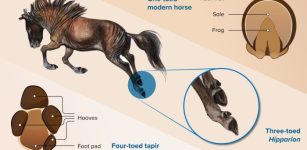 Modern Horses Have Lost Their Additional Toes, Scientists Confirm
Evolution | Jun 21, 2023
Modern Horses Have Lost Their Additional Toes, Scientists Confirm
Evolution | Jun 21, 2023 -
 Skull Discovered In Ancient City Of Euromus Shows Neurosurgery Performed 2,200 Years Ago
Archaeology | Aug 2, 2019
Skull Discovered In Ancient City Of Euromus Shows Neurosurgery Performed 2,200 Years Ago
Archaeology | Aug 2, 2019 -
 What Were The Most Important Medieval Marketplace Rules?
Ancient History Facts | Mar 25, 2024
What Were The Most Important Medieval Marketplace Rules?
Ancient History Facts | Mar 25, 2024 -
 First European Farmers’ Heights Did Not Meet Expectations
Archaeology | Apr 8, 2022
First European Farmers’ Heights Did Not Meet Expectations
Archaeology | Apr 8, 2022 -
 Challenging Prehistoric Gender Roles – Women Were Hunters Too – Not Just Men
Archaeology | Oct 21, 2023
Challenging Prehistoric Gender Roles – Women Were Hunters Too – Not Just Men
Archaeology | Oct 21, 2023 -
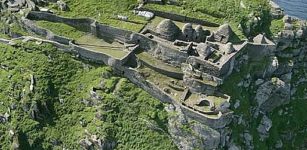 Magnificent Skellig Michael And A 1,400-Year Old Christian Monastery
Featured Stories | Feb 8, 2016
Magnificent Skellig Michael And A 1,400-Year Old Christian Monastery
Featured Stories | Feb 8, 2016 -
 On This Day In History: American General Benedict Arnold Commits Treason – On Sep 21, 1780
News | Sep 21, 2015
On This Day In History: American General Benedict Arnold Commits Treason – On Sep 21, 1780
News | Sep 21, 2015

